Travel Tips
America the Beautiful: Five More Hidden National Parks
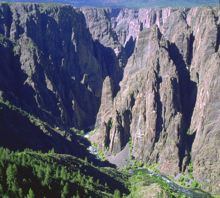 With the summer months approaching, it can get more difficult to secure a campground in one of the United States’ national parks.
With the summer months approaching, it can get more difficult to secure a campground in one of the United States’ national parks.
Plus, you’ve already camped in Yosemite, hiked the trails of Yellowstone and admired the Rocky Mountain National Park from its peaks.
Before you announce that America has no natural wonders left to discover, check out these lesser-known National Park Service or U.S. Forest Service designated lands that will help you rediscover America’s beauty—from the mountains to the prairies.
APOSTLE ISLANDS NATIONAL LAKESHORE
Island hopping doesn’t necessarily mean that you have to board the next flight to Hawaii. With 21 islands and 12 miles of coastline, the Apostle Islands National Lakeshore provides a less crowded way of admiring Lake Superior’s natural beauty.
Although most people today come to the islands, nicknamed the “Jewels of Lake Superior,” to be able to enjoy its scenery and to take advantage of the photographic opportunities, the Apostle Islands boasts a rich history of peoples who have inhabited its lands including the Objiwe tribe, who had settled on the islands as far back as the 1400s, and early French fur traders and missionaries.
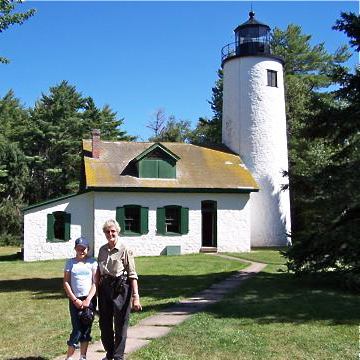 Even though none of the islands designated as part of the national lakeshore are occupied year round, many of them have docks, campgrounds, and hiking trails that can be enjoyed by patrons.
Even though none of the islands designated as part of the national lakeshore are occupied year round, many of them have docks, campgrounds, and hiking trails that can be enjoyed by patrons.
Activities on the island range from guided tours of the many lighthouses (including the Sand Island Lighthouse, which accepts volunteer lighthouse keepers) to scuba diving the shores to look at shipwrecks and unique rock formations.
For experienced boaters and kayakers, getting to the Apostle Islands can be as simple as taking your vessel and navigating it toward the island of your choice. The National Park Service offers public docking spaces on the islands on a first-come, first-served basis for a small overnight fee. However, for those who may lack experience, the National Park Service offers the Apostle Island Cruise Service as a means to get to and around the islands and even offers short tours for those who cannot stay overnight. www.nps.gov/apis
Fees: https://www.nps.gov/apis/ (Fee Schedule in .pdf format)
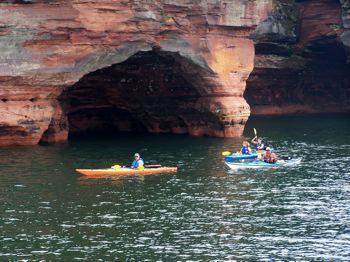 Docking:
Docking:
Overnight docking, boats less than 40 feet: $10
Overnight docking, boats 40 feet and greater: $20
Cruise: apostleisland.com
Apostle Islands Cruise Service: starts at $28.95 for adults/$16.95 for children
Ashland Bay Express: $39.95 for adults/$23.95 for children
Other options to get to island, like guided kayak tours, fishing expeditions: www.nps.gov/apis/ (Trips, Tours & Services Document in .pdf format)
SIERRA NATIONAL FOREST
While all your friends and family head off to Yosemite, why not go to the Sierra National Forest instead? Nestled on the western slopes, the Sierra National Forest is part of Sierra Nevada and shares the mountain range’s vast botanical life, as well as its abundance of wildlife that live in its dense wooded areas.
During the winter, the forest offers snow activities such as skiing and snowmobiling; however, during the summer, the forest transforms itself into a summer camp playground for visitors. While the traditional boating, camping, fishing and horseback riding activities are available, the Sierra National Forest is also home to many roads only accessible by off-highway vehicles, such as the difficult Dusy-Ershinroute, a two to three-day expedition between the John Muir and Dinkey Wilderness areas.
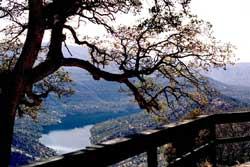 However, if you would prefer to stay in your car, you can always take Route 168, better known as the Sierra Vista Scenic Byway. The 70-mile road takes you through the heart of the Sierra National Forest, and it provides breathtaking views from your car window. Overnight stays require a wilderness permit, which is $5.00 if reserved up to 21 days in advance or you can obtain a walk-in permit for free up to 24 hours before on a first-come, first-serve basis. www.fs.fed.us/r5/sierra
However, if you would prefer to stay in your car, you can always take Route 168, better known as the Sierra Vista Scenic Byway. The 70-mile road takes you through the heart of the Sierra National Forest, and it provides breathtaking views from your car window. Overnight stays require a wilderness permit, which is $5.00 if reserved up to 21 days in advance or you can obtain a walk-in permit for free up to 24 hours before on a first-come, first-serve basis. www.fs.fed.us/r5/sierra
And, if you really want a throw-back to the good old days, why not drive the forest in a classic car? You can rent actual restored originals of a Model T or a Model A Ford while soaking in the natural beauty around you. Choose among a top-down 1915 Touring Car, a 1928 Model A, a 1929 Model A Roadster, starting at $450 a day for four people. www.driveamodelt.com
Don’t miss this video on Great Lesser-Known National Parks, which includes the Model T program:
BUFFALO NATIONAL RIVER
Traversing 132 miles through Ozark Country in Arkansas, the Buffalo National River offers an alternative view of the South from the more-visited Mississippi River. One of the last rivers in the contiguous United States that is dam-free, the river is ideal for water activities of all levels.
Home to Arkansas’ only wild elk herd, the Buffalo National River also offers short hikes which display its changing foliage. The Whitaker Point trail may only be three miles roundtrip, but it will take you through the floral and arboreal wildlife of the area toward Hawksbill Crag, a bluff than many have cited as ideal for picnicking.
The nearby Los Valley trail offers caves and areas inhabited by Native Americans to explore and features portions that are wheelchair accessible. For more on accessible travel, visit America’s Accessible National Heritage, or if you’re into accessible outdoor adventures, try Adaptive and Accessible Hiking.
 Some roads are also vehicle accessible, but it is important to note that the roads are rocky and should only be attempted by experienced drivers when conditions are dry. Many roads that are no longer accessible to cars have been re-designated for horseback riding, and two camping areas, Steel Creek and Erbie, are reserved for visitors and their horses.
Some roads are also vehicle accessible, but it is important to note that the roads are rocky and should only be attempted by experienced drivers when conditions are dry. Many roads that are no longer accessible to cars have been re-designated for horseback riding, and two camping areas, Steel Creek and Erbie, are reserved for visitors and their horses.
Though camping is allowed, there are also cabins that are available for rental through Buffalo Point Concession and other companies. Cabins with modern amenities and cabins for those who prefer a more rustic experience are both available. The Buffalo National River is accessible through three main highways, but private shuttles and boat chartering are offered within the National River boundaries. www.nps.gov/buff
Fees & Reservations: www.nps.gov/
$10 a day for most campgrounds
Cabin Rentals (on NPS site): www.nps.gov/buff/concessions.htm
Cabin Rentals and shuttles (private company): https://buffaloriver.com
GUADALUPE MOUNTAINS NATIONAL PARK
Many travelers will head to Carlsbad Caverns; however, venture 56 miles southwest from there and you can admire the Guadalupe Mountains’ fossilized reef. The area houses the fossilized remains of the Captain Reef, a geological wonder that was buried once the sea dried up but revealed centuries later by high winds and rain.
 Skeletons of plant life and animals formed the basis of the limestone rock that is visible today and have created El Capitan, a thousand-foot cliff that overlooks Guadalupe Mountains National Park.
Skeletons of plant life and animals formed the basis of the limestone rock that is visible today and have created El Capitan, a thousand-foot cliff that overlooks Guadalupe Mountains National Park.
Guadalupe Mountains’ canyons are yet another of the park’s wonders. An oasis in the desert, McKirrick Canyon is one of the few areas in west Texas that can support non-desert wildlife and is home to the Grotto, a limestone area decorated with stalagmites and stalactites.
Through the generous donations of past residents, many cabins and ranches are open to the public. Frijole Ranch provides a history lesson into what life was like living in the arid Texan landscape and houses a museum that shows artifacts from the first occupants of the area to the early ranching entrepreneurs. Located in west Texas, the national park is accessible by car from two major roads, Highway 62/180 and New Mexico State Road 137. www.nps.gov/gumo
Fees: www.nps.gov/gumo/planyourvisit/feesandreservations.htm
$5 for anyone 16 and older; valid for seven days
Camping: $8 per night per site, $4 for seniors
BLACK CANYON OF THE GUNNISON NATIONAL PARK
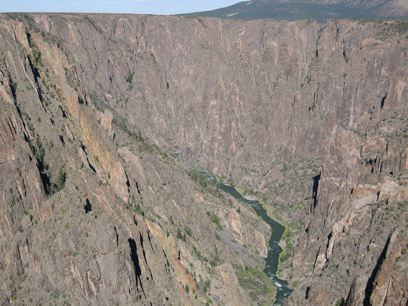 West of the Rocky Mountains National Park, the Black Canyon of the Gunnison is a lesser-known canyon with views that can rival its more popular colleagues. Due to its steepness, the canyon walls are excellent material for rock climbers looking for a challenge.
West of the Rocky Mountains National Park, the Black Canyon of the Gunnison is a lesser-known canyon with views that can rival its more popular colleagues. Due to its steepness, the canyon walls are excellent material for rock climbers looking for a challenge.
Holding the title of the tallest vertical wall in the state of Colorado, the Painted Wall is located in the north part of the park and is popular for experienced climbers. Hiking through the interior of the canyon is also possible; however, due to the fact that these paths are not designated, they are meant for experienced hikers who love to explore unmapped territory. There are easier marked paths on the canyon rim that can be enjoyed by campers looking for a way to admire the canyon’s beauty.
However, during the winter, the Black Canyon’s resources are open to people of all ability levels. Cross-country skiing through the South Rim Drive, which is left inaccessible to cars for the winter months in order to provide a ski trail, and snowshoe journeys through the national park are typical activities enjoyed by nature lovers. Park Rangers even guide snowshoe walks and rent snowshoes for free and offer an annual Midnight Ski Outing.
The South Rim of the Canyon is only 15 miles east of Montrose, CO. However, the North Rim, which is 11 miles south of Crawford, is only accessible through the unpaved North Rim Road, which offers scenic views through its six overlooks. www.nps.gov/blca
Fees: www.nps.gov/blca/planyourvisit/feesandreservations.htm
$15 per vehicle or $7 per person, 16 and older
By Michelle Castillo for PeterGreenberg.com. All photos courtesy of the National Park Service.
Learn more about: America the Beautiful: Five (More) Hidden National Parks.
Don’t miss The “Grand Dame” Hotels of Our National Park System.
Like the outdoors? Try America the Beautiful: Hiking America’s Trails.












